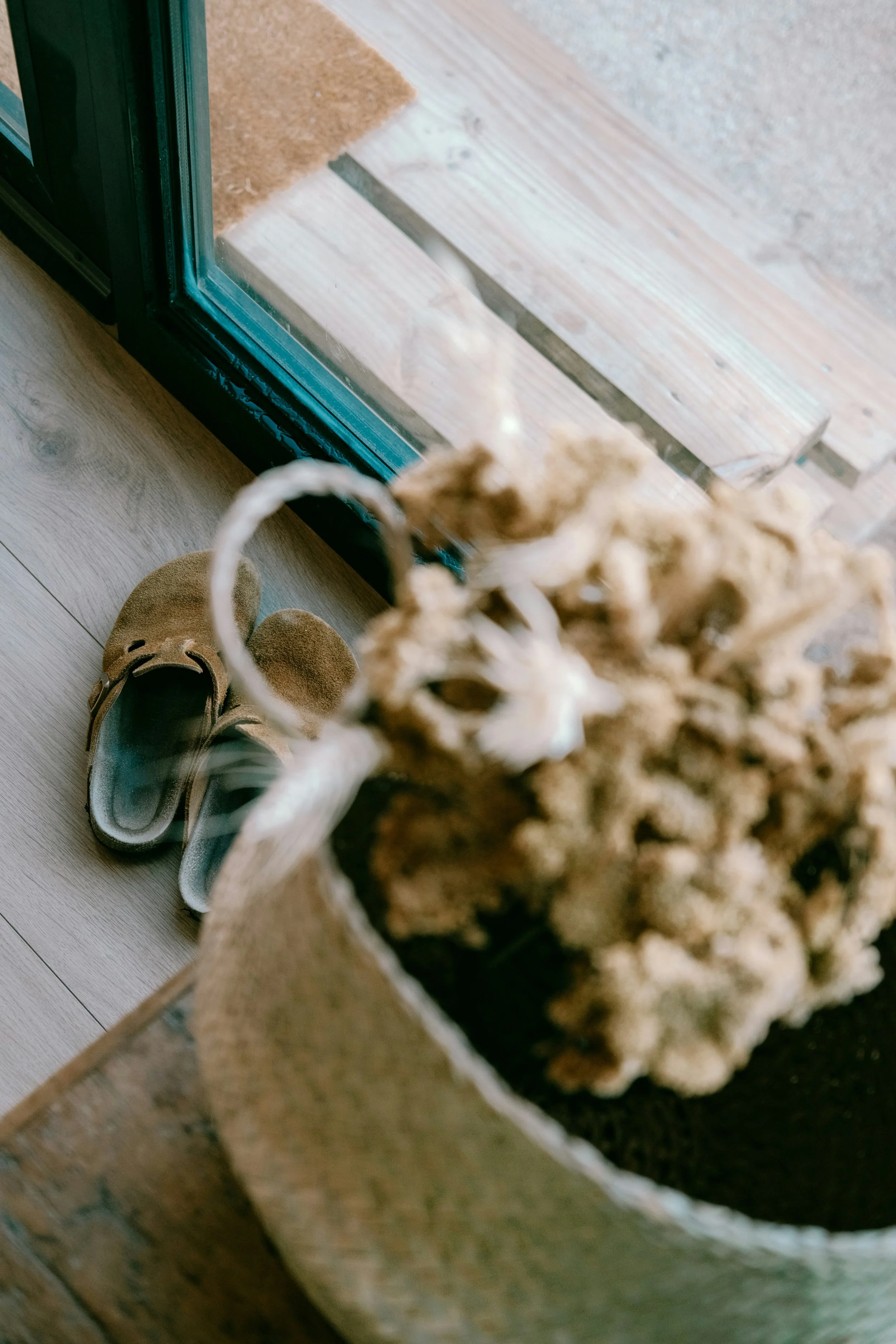Creating Calm Living Spaces
by azulomo | 4 min read
Stillness Meets Style
A Slow Living Philosophy for Everyday Life
There’s a quiet kind of magic that happens when a space makes you pause. You walk in, your shoulders drop, and for the first time all day—you breathe a little deeper. Maybe it’s the light. Maybe it’s the stillness. Maybe it’s the feeling that this space is in no rush to be anywhere. It’s just here. And so are you. — That’s the essence of slow living — and it often begins at home.
In a world that prizes speed, productivity, and performance, slow living offers something softer. A home that doesn’t rush you. A room that doesn’t demand your attention. A space that simply holds you, quietly. Whether you’re designing a beachside holiday rental or simply trying to bring more calm into your daily life, creating a slow, nurturing environment is less about perfection—and more about intention.
It’s in the simple rituals—morning light spilling across linen sheets, the sound of the sea through an open window, or the steady comfort of a favourite chair waiting in the corner. These aren’t grand gestures, but they hold quiet power. Because when our spaces feel calm, we feel calmer too. Slow living reminds us that how we live is shaped by where we live. And that designing with care is never just about looks—it’s about creating the emotional backdrop for a life lived with presence, peace, and a touch more breath.
In a world that rarely pauses, a calm home is a quiet rebellion—and a beautiful one at that.
Serenity is a lifestyle - a calm space doesn’t need to shout to be heard – it simply invites you to breathe, pause, and feel at ease.
Why Calm Matters in a Fast-Moving World
We weren’t built to be “on” all the time. But modern life often demands it—notifications, schedules, the buzz of urgency everywhere. Our homes, more than ever, need to be the counterbalance.
A calm space isn’t just a place—it’s a pace. It invites us to soften, to ground, and to reconnect with ourselves. For holiday homes, this becomes even more powerful. You’re offering guests more than just a pretty room—you’re offering them a breath of fresh air, a mental reset, a taste of something slower.
Textures of Tranquillity: Natural and Nurturing
Slow living often begins with the senses. What we touch, what we hear, what surrounds us. Natural materials have a way of anchoring us in the present moment. There’s comfort in the imperfect. The handmade. The well-loved.
Consider layering your space with:
Linen curtains that shift softly in the breeze
Woven rugs or textured throws in earthy, muted tones
Wooden furniture that’s warm to the touch, not cold or clinical
Handmade ceramics or pieces with a story—fired, not mass-produced
In holiday homes especially, these materials create a tactile sense of care. Guests won’t always name it—but they’ll feel it.
A Sensory Sanctuary: Light, Scent, and Sound
Calm isn’t just something we see—it’s something we sense. And the smallest details often make the biggest impact.
To design with the senses in mind:
Use warm, indirect lighting or fairy lights in place of harsh overheads
Let natural light in through sheer curtains or unblocked windows
Diffuse calming scents like eucalyptus, lavender, or soft citrus
Create quiet corners—places for morning tea, reading, or just being
Keep a playlist of soft, ambient sounds or nature-inspired music for arrival
In a guest setting, these cues say: “Welcome. Rest is not only allowed—it’s encouraged.”
Clear the Clutter, Clear the Mind
You don’t need to go full minimalist to embrace calm. But slow spaces do tend to have one thing in common: clarity. There’s breathing room. Surfaces aren’t overloaded. Objects feel intentional.
Try these gentle slow-living edits:
Fewer but more meaningful decorative pieces
Baskets or tucked-away storage for visual quiet
A dedicated table or bench with nothing on it—just space
Thoughtful “pauses” between design elements, not wall-to-wall stuff
For holiday homes, this also means creating easy flow. Clear walkways. No awkward corners. Nothing that makes a guest wonder, “Where should this go?”
Nature Indoors: The Soul of Biophilic Design
Slow living naturally leans toward nature. Not in a “turn your home into a jungle” way (though we support that if it brings you joy), but in a gentle, grounding way.
Bring nature in with:
A few well-placed leafy plants or fresh herbs in clay pots
Driftwood, stones, or shells gathered thoughtfully (not overly themed)
Artwork or linens that reflect natural forms or coastal textures
A view—if you’re lucky enough to have one—framed and unblocked
If your holiday home overlooks the sea, countryside, or even a cityscape softened by sunset—let that be part of the design. Nature does serenity better than any sofa.
More Than Pretty: The Emotional Power of Calm
Calm living spaces aren’t about surface beauty—they’re about emotional depth. They make people feel safe, supported, and gently held. They offer stillness in a world full of noise.
In a holiday setting, this is especially powerful. When a guest feels emotionally at ease, everything else improves—sleep, mood, connection, even their memory of the stay.
At home, that same calm helps you come back to yourself. To breathe slower. To do less, but feel more.
Serenity Isn’t a Style—It’s a Way of Living
A calm space doesn’t shout. It doesn’t need to. It’s content being what it is: a place where presence is enough. Whether you’re creating a sanctuary by the sea or slowing down your small city flat, remember—serenity starts with intention. With choosing less noise. With leaning into textures, tones, and touches that feel like an exhale.
And as you begin to slow down your space, you may just notice something surprising. You begin to slow down too.
—
At azulomo, calm isn’t just an aesthetic—it’s our anchor. It shapes how we design, how we host, and how we move through the world. We believe that the spaces we live in—and the ones we offer to others—should feel like a soft place to land. Because in the end, calm is more than a mood. It’s a message. One that says: you belong here, just as you are. And that’s the kind of beauty we’re here to build.
“Calm living spaces offer something deeply valuable: a return to presence. Rooted in the philosophy of slow living, they prioritise ease over excess, intention over impulse, and feeling over flash. Whether in your own home or a coastal hideaway you share with guests, creating calm isn’t about perfection—it’s about crafting a space that supports rest, reflection, and real connection.”







